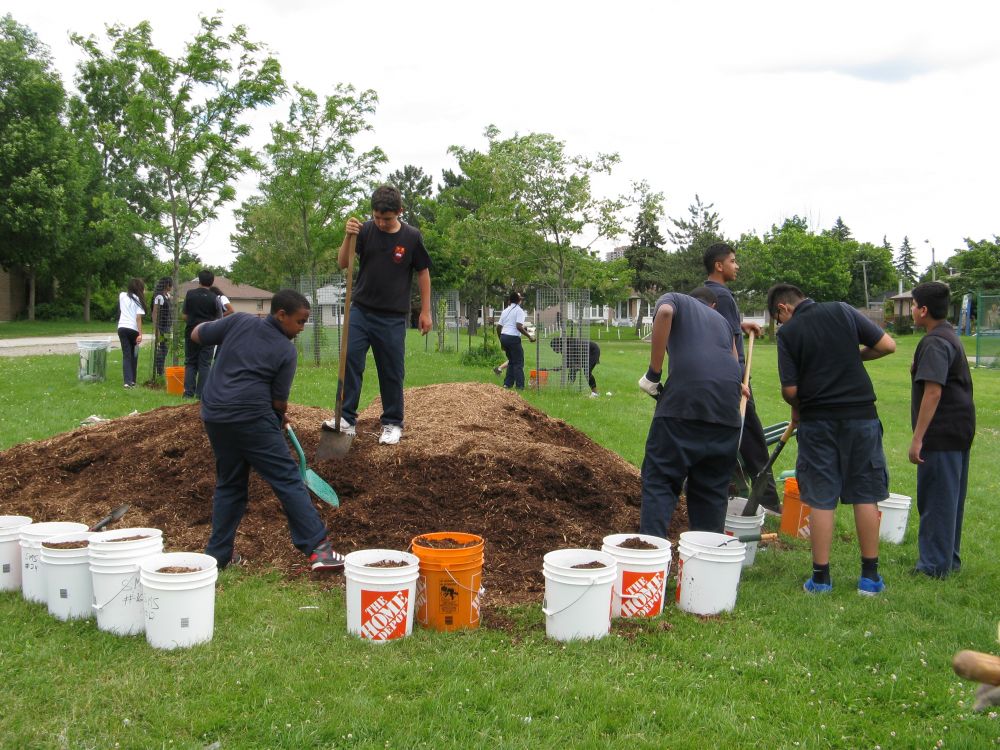For example, you could go on a walk using a tree classification key and learn how to identify different species with your grade six science class. You could look at trees as habitat for other living things with some eager fourth graders. Or you could investigate the interactions between trees and the rest of the environment with grade seven students. These examples fit with any science class, but there are also many ways to get outside and integrate trees into your math and language arts studies too.
One of the most valuable lessons I learned from the course was just how many things there are that cause stress to urban trees. They suffer from having their roots squashed in small cement containers, air pollution, drought, strong winds, vandalism, invasive species (such as the Emerald Ash Borer) and so much more. It sounds even more stressful than being a teacher! When you think about it, it’s a wonder that they even survive.

My new-found awareness helped me to notice the bark damage students were causing young trees with their bicycles. Now we’re getting a bicycle rack to solve this problem and I got my class mulching to help the trees recover.
As teachers, we have an incredible opportunity to actively involve the next generation in caring for and growing our trees. Taking LEAF’s Tree Tender Volunteer Training course helped me do this. The Elementary Teachers of Toronto Federation offers reimbursements for the cost of the Tree Tenders course for up to eight TDSB teachers each season. Register Today!
Denise Oliver is an elementary school teacher with the Toronto District School Board (TDSB). Denise is also a member of the Elementary Teachers Federation of Toronto Environment Committee and a committed tree hugger! If you are an elementary school teacher with the TDSB and you are interesting in becoming a tree tender leave a comment below and Denise will respond. The Tree Tenders Volunteer Training Program is supported by Ontario Power Generation's Biodiversity Program and York Region.
